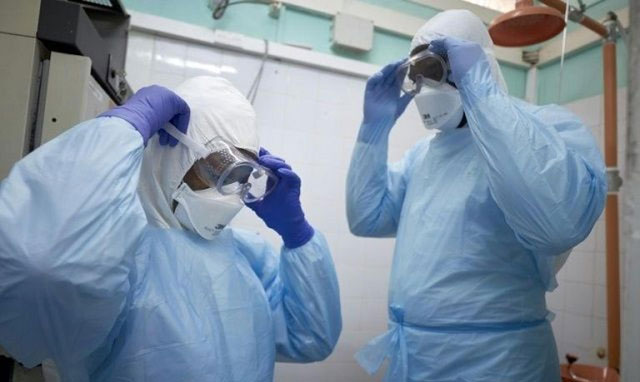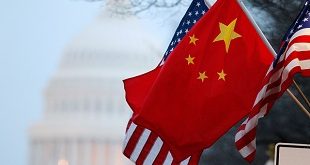
Why many experts believe countries may be rashly entering a new stage of learning to live with COVID-19 virus
| THE INDEPENDENT | After 2 years of living through a global pandemic, many scientists and policymakers are trying to answer what happens next.
The Omicron variant of SARS-CoV-2 has driven an unprecedented number of infections worldwide, despite surfacing just three months ago; in November 2021.
Countries with high levels of immunity, either from vaccines or previous infections, have also seen lower rates of hospitalisations and deaths. This is also the result of Omicron being milder than its predecessors.
Because of the lower rates of hospitalisations and deaths, many hope we are entering a new stage where we learn to live with the virus.
Some countries in Europe, such as Denmark and the United Kingdom, despite having a high number of daily COVID-19 cases, have already eased or lifted many restrictions.
“It’s based on the anticipation that we are about to enter an endemic phase, but we are not there yet. As the saying goes, we’ve seen this movie before. There is a great tendency, and we’re seeing it here in the United States, also, to lift restrictions,” said Dr. William Schaffner, professor of preventive medicine and infectious diseases at Vanderbilt University Medical Center in Nashville, Tennessee.
Also, many experts still believe some countries may be rushing in their decisions and warn against being too optimistic.
Here is what experts predict will happen as Omicron loses steam.
COVID-19 could become endemic this year
Based on current data and trajectory, it is still premature to speak of a decisive shift into endemicity, experts say.
“It’s too early to raise the mission accomplished banner. We’re not there yet. In public health, there is a great tendency to eradicate the control program before the disease is (under) control,” Schaffner said
If the world becomes complacent, “the virus will continue to spread in its own enthusiastic fashion until it just runs out of susceptibles,” he said.
COVID-19’s endgame: The biggest threats
Scientists agree that there is no consensus on whether the novel coronavirus will remain less deadly or if the current pandemic cycle will end with Omicron.
“Dr. Fauci has signaled the word endemic. But he is also much more cautious in his messaging, not necessarily indicating that we’re going to transition yet,” said Dr. Monica Gandhi, an infectious diseases specialist with the University of California, San Francisco.
Still, there are several threats to public health even when the current wave passes, they say.
One is inconsistent immunity across different populations and countries.
Patchy protection, whether from vaccine inequity or waning immunity from vaccines or infection, could create hotspots of transmission worldwide.
Meanwhile, the biggest obstacle in planning a roadmap for a post-Omicron world is vaccine inequity, said Katharina D. Hauck, PhD, professor in health economics and deputy director of the Abdul Latif Jameel Institute for Disease and Emergency Analytics in London.
An estimated 3 billion people are unvaccinated by choice or lack access to vaccines.
“I think there will be a broader discussion coming about the issue that 3 billion people in this world are not vaccinated,” she told Healthline. “The threat that this poses to the emergence of variants, from the costs in terms of lives lost and the need for non-pharmaceutical mitigation, is (unquantifiable).”
New variants: Not a question of if, but how bad
“Many epidemiologists think that the worst, in terms of hospitalisations and deaths at least, is over. But as some say, including new (higher daily) figures, there will be possible bumps on the road,” said Hauck.
She said one of these bumps is the threat of new variants:
“(T)hey’re very likely to arise. But I think most epidemiologists believe that they will likely have a less traumatic impact than Omicron had just before Christmas. And that’s because of the very high level of immunity in (many) countries, both (due to) vaccinations and prior infections.”
Schaffner agreed and said new variants would come up as transmission continues largely unabated in much of the world.
The real concern, he said, is whether they will spread widely or be more deadly than previous variants. He underscored that we needed to keep our guard up and have a new contingency.
“There’s always the lurking threat of a new variant appearing on the international scene, which will once again change the equation. Of course, this has happened twice before. We were guardedly optimistic. Then along came Delta. Just as we were starting to control Delta, along came Omicron,” said Schaffner
Hauck noted that new variants often have a “transmission advantage” over earlier variants.
“Viruses actually have an interest (to) keep individuals who are infected and infectious in the community as long as possible and able to transmit as efficiently as possible,” she said.
What endemic means
A predominant view in recent discussions about the pandemic is that endemicity means not as dangerous as the pandemic stage.
However, the belief that newer variants always become less severe is not necessarily true, Hauck said. The Delta variant is a prime example. A better phrase would be “not as dangerous,” Gandhi said.
Once the world is in an endemic phase, the world will be “a much safer place to be because the virus is under control,” she said.
Schaffner reminded that although the virus will likely not pose a great threat to the majority of the immunised population, there will always be vulnerable groups.
“This is still a virus that is very dangerous to unvaccinated people and also to people who are immune-compromised or are very frail, with a number of underlying illnesses that predispose them to severe disease. We in public health must continue to urge people to be careful, in order to curtail the spread of the virus to those more fragile people or to the people who are more likely to get serious disease,” he told Healthline.
That could prompt some people to take their own precautions and mask up when needed.
“If there are surges of COVID-19 in a community, I think many people, particularly older people, people with underlying illnesses, and the immunocompromised, will once again reach for their masks and will engage on their own in social distancing. They will rent the movie rather than going to the movie. So we’ll see much more of that sort of behavior,” said Schaffner.
“I think we can’t stress enough how we’ve learned so much about masks over the last 2 years. (T)hose who are immunocompromised should be wearing those good masks, N95s,” Gandhi said.
Annual boosters a possibility, but not for all
The decision of an annual COVID-19 vaccine would be made depending on the level of transmission in the world and local communities, Gandhi said.
If the transmission in a community is high, vaccination may be encouraged periodically, she said.
“It really all depends on what happens. It’s a bit premature to make those predictions,” she said.
One possibility, Gandhi said, is that Omicron may drive cases extremely low worldwide, even in places with low levels of vaccination, such as southern Africa.
“The question is, does it drive down transmission enough such that we have relatively low rates of transmission this time next year? And in which case, we will not vaccinate everyone. We will actually just do those who need to be — immunocompromised or older with chronic conditions,” she said.
On the other hand, Gandhi believes we may need another vaccine that targets the virus as a whole for broader immunity, to use as a booster for mRNA vaccines. One candidate, she says, is Covaxin, a vaccine developed in India that may be able to protect against multiple variants.
“What if a variant comes out that’s even more mutated across the spike protein? (With a vaccine like Covaxin) you’ve developed immunity across the whole virus,” she said.
Schaffner, meanwhile, said the world may need boosters now and then, as with the influenza vaccine.
“We may indeed have to tailor the vaccine that we’re using, or the booster may have to be altered as we do with our influenza vaccine on an annual basis,” he said.
Timely restrictions but few lockdowns
Hauck said that policymakers are currently weighing their decisions carefully, trying “to navigate a really difficult trade-off between infection control and the social and economic costs of restrictions.”
Gandhi said lockdowns would be unlikely, but restrictions may be periodically reintroduced if hospitalizations rise or an uptick above “what’s expected” is recorded in the winter. She said this level would be different for many countries.
“In the future, there will be an acceptable number of hospitalisations. I don’t know what that number will be. I think 10 over 100,000 is possible. If it goes much higher, there will be restrictions, and an emergency will be triggered.”
Hauck said that going forward, hospital capacity would be a determining factor in governments’ lockdown decisions.
“Obviously, the main concern of policymakers is the number of deaths but potentially more important is whether hospital capacity is breached,” she said. “It’s easy to multiply the number of beds, (but) you can’t so quickly scale up the number of medical staff without generating huge costs to other patients. So, at a certain level of infections, it is unavoidable to implement lockdowns.”
****
Source: Healthline
 The Independent Uganda: You get the Truth we Pay the Price
The Independent Uganda: You get the Truth we Pay the Price



